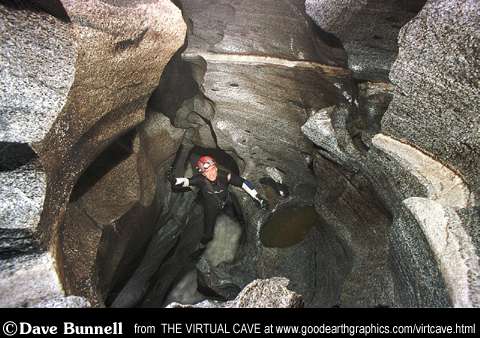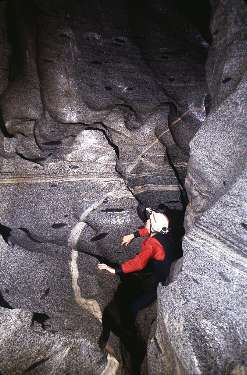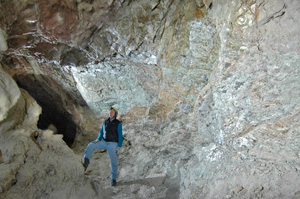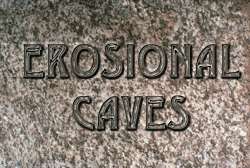 |
 |
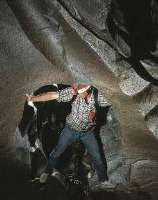 |
|
Erosional caves are those formed by the action of water or wind, carrying abrasive particles capable of carving rock. With respect to water, the processes involved are very much like those when a surface canyon is carved, and such speleogens as fluting and potholes may be formed. But in order to form a cave instead of just a canyon, something must fracture the host rock and allow an influx of water. This could be a joint or a fault, or a zone of weakness along a bedding plane in sedimentary rock. Erosional caves can be found in almost any kind of rock, from hard granite to soft claystones, and even including limestone. In fact erosion can be a very active process in caves originally formed by solution caves as well, but usually occurs after the cave has drained and surface streams are pirated into the cave. Erosion tends to produce tall, canyon-like passages. Running water on glaciers may sink into crevasses and melt a path through the glacier to form glacier caves. These often show pronounced scalloping on the walls and ceilings, and are often decorated with ice formations. Glacier caves are rarely extensive, and may come and go as glaciers recede. The Paradise Glacier Cave system on Mt. Rainier was at one time several kilometers long, but has melted away as the glacier has receded in recent decades of global warming. Glacier caves are also notoriously unstable, and people have been killed by chunks of falling ice. |
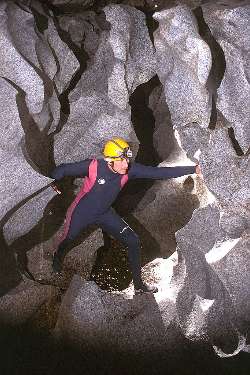 |
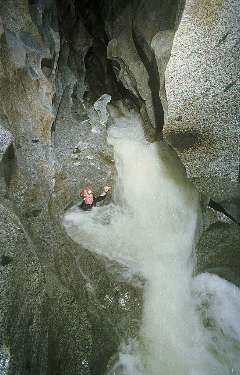 |
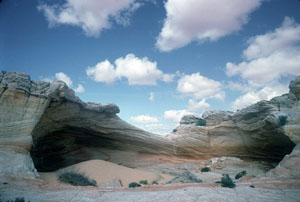 Note the person standing above the cave opening on the right Note the person standing above the cave opening on the right |
Wind Caves Sandstone is soft and readily eroded. In some areas wind has sculpted large (but not deep or extensive) caves, as the one on the left. Note the large sand dune below the left-hand entrance. On the right is a smaller cave with extensive wind sculpting from Castle Rock State Park in California. Weathering in sandstone may also be assisted by water dissolving the carbonate cement that holds sandstone together. |
 |
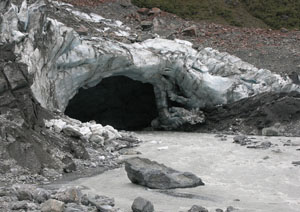 |
Glacier Caves Glacier caves occur on glaciers, with surface crevasses channeling surface streams underground which melt a pathway through the ice, often to resurge at the forward end, as in the photo on the left from the Franz Josef Glacier in New Zealand and on the right, just inside the Athabasca Glacier in Jasper National Park, Canada. Recently a team of glaciologists has been studying glacial cave hydrology around the world with some stunning photos resulting, presented HERE. |
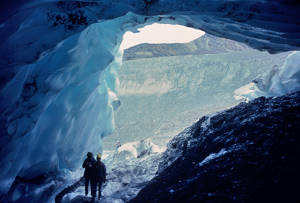 |
| Back to: | |
 |
Created on October 28, 2000 Photos copyright Dave Bunnell |
